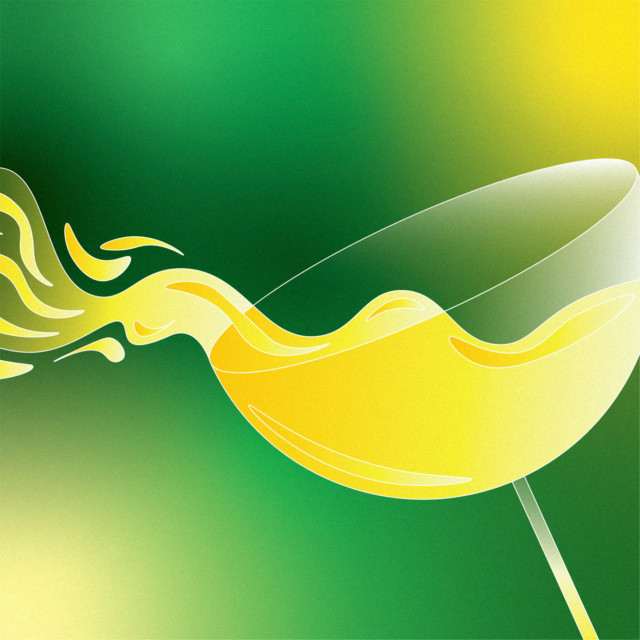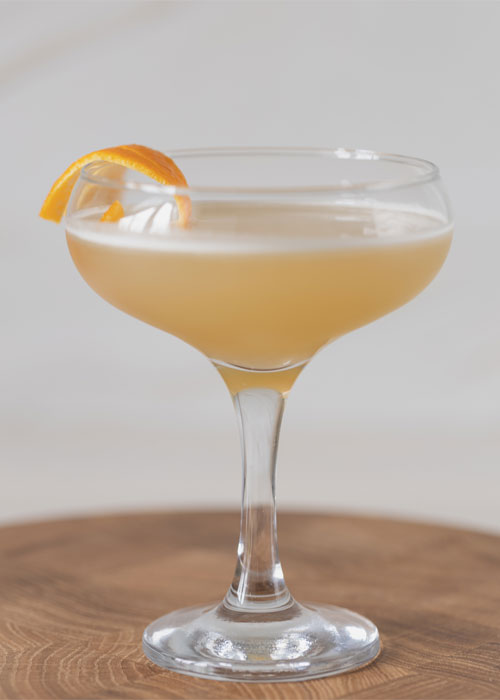St. Patrick’s Day has always been a difficult time for the dedicated cocktail enthusiast. On one hand, it’s one of the few dates on the calendar where drinkers are granted full license to enjoy themselves. On the other hand, the imbibing going on isn’t exactly of the discriminating sort. It veers toward quantity, not quality, and rarely ventures beyond pints of beer and shots of Irish whiskey. You don’t see many March 17 revelers gathering round the local pub with a cry of, “What do you say, fellows, another round of Tipperarys? Barkeep, not so light on the vermouth this time!”
Part of the problem is a lack of options. Celebrants naturally want to partake of Irish products on St. Patrick’s Day. But there are just not that many great Irish whiskey cocktails out there that have achieved wide popularity. There’s the Irish Coffee, of course. But after that, you’re grasping at straws. Ever heard of the Black Thorn? I didn’t think so.
This sorry state of affairs recently inspired an entire book. “Paddy Drinks: The World of Irish Whiskey Cocktails” published on Feb. 22. Its authors, Jillian Vose, Sean Muldoon, and Jack McGarry, have a fighting interest in the fate of Irish whiskey mixology, being the force behind the Dead Rabbit, arguably the most famous Irish-leaning craft cocktail bar in the United States. “Paddy Drinks” is their joshing term for cocktails that ask for Irish whiskey; the book contains 90 such recipes. First up in the classics section is, of course, the Irish Coffee. (The Dead Rabbit serves a good one.) Next is the Tipperary, a sort of Irish-whiskey Manhattan laced with Chartreuse. And third in line is the Cameron’s Kick.
But is the Cameron’s Kick a Paddy drink?
From a cocktail geek’s point of view — and that’s the only point of view I’ve got — it’s a fair question. Yes, the Cameron’s Kick has got Irish whiskey in it. But it’s also got an equal amount of Scotch. So the drink’s allegiance could go either way. Plus, its sweetening agent is orgeat, the almond syrup most closely associated with the Mai Tai. And because whiskey and orgeat don’t usually meet in the same glass, that makes it a genuine oddball in cocktail terms.
As long as I’ve been writing about cocktails, and that’s 16 years now, the Cameron’s Kick, which dates back to the 1920s, has been regarded as a pet drink, one of those forgotten, rediscovered gems that bartenders and cocktail writers coo over and try to convince the public to love. And with good reason. It’s damn delicious, a perfect cocktail, really. To say it’s a St. Patrick’s Day drink, however — a drink for one day, not all 365 — seems like a disservice.
But first, a little background. The Cameron’s Kick first appeared in print in bartender Harry MacElhone’s 1922 book “ABC of Mixing Cocktails.” It was just a recipe; no citation of the cocktail’s author, or explanation who Cameron might be. MacElhone printed the recipe again in his 1927 volume “Barflies and Cocktails.” MacElhone was a Scot who became a famous bartender and bar owner during his lifetime (1890-1958). He was head bartender at the swanky Ciro’s Club in London in the 1910s, but is best known as the longtime proprietor of Harry’s New York Bar in Paris. That saloon still stands.
Given MacElhone’s connection to Ciro’s, it’s no surprise that the Cameron’s Kick makes an appearance in “The Green Cocktail Book,” by one “Jimmy, late of Ciro’s London,” which was published in 1932. (Jimmy provides no more information about the drink than Harry did.) And the cocktail also shows up in the widely read “Savoy Cocktail Book,” published in 1930.
It’s around 1935 that things begin to go south for the Cameron’s Kick. The annual “Mr. Boston Official Bartender’s Guide” was established that year and it got the cocktail wrong from the very start. The recipe called for 1/3 part Irish whiskey, 1/3 Scotch, 1/6 lemon juice, and 1/6 orange bitters. That is one mighty stark and astringent Whiskey Sour! (That 1/6 orange bitters — which would amount to a full half-ounce of bitters in an average-sized cocktail — is an obvious error. Some tipsy copy editor at Mr. Boston undoubtedly looked at “orgeat” and saw “orange.”)
Mr. Boston would continue to misprint the recipe for the Cameron’s Kick for 70 years. This sad situation was only reversed when, in the aughts, cocktail historian David Wondrich discovered the original recipe in the 1949 ”Esquire’s Handbook for Hosts.” Wondrich later included the drink in his 2005 book “Killer Cocktails”; put it on the cocktail menu at 5 Ninth, a bar where he consulted in 2004; and served it at Tales of the Cocktail, the annual drinks convention in New Orleans. People took note. In the coming years, the Cameron’s Kick would appear on menus at many bars and in cocktail books by the likes of Jim Meehan and Paul Clarke. The Cameron’s Kick was back.
But it was back not as an Irish whiskey cocktail, per se, but as a venerated craft cocktail, a historical potion designed for all. That, however, does not seem to be the reputation the drink had during the latter 20th century. The only glimpses you got of the Cameron’s Kick in the newspapers of that era were in advertisements placed by liquor stores and Irish bars in the days leading up to St. Patrick’s Day.
A 1967 ad in the Hartford Courant for Mahon’s Package Store recommended “Stimulating Cocktails” for St. Patrick’s Day, among which were the Blarney Stone Cocktail, Irish Shillelagh, Shamrock, Tipperary, and… Cameron’s Kick. (The recipe listed was again the Mr. Boston version: Irish whiskey, Scotch, lemon, orange bitters.) A March 1974 ad for the Party Store in Spearfish, S.D.’s Queen City Mail, also encouraged readers to drink the Cameron’s Kicks alongside Irish Coffees and the like. At this point, the orange bitters had been dropped from the recipe. (It’s probable orange bitters were increasingly hard to come by in the 1970s.)
There were further ads in the 1970s, from Montana to Pennsylvania, that touted the cocktail as a perfect St. Pat’s tipple. At the Shenanigans bar in Hazleton, Pa., the Tuesday night lure on St. Patrick’s week was the Cameron’s Kick, along with sing-a-longs featuring Jack Myers and “his fabulous strolling accordion.” No doubt these bars and stores were mining the ubiquitous Mr. Boston guides for any cocktail they could find containing Irish whiskey.
So, to a lot of people, once upon a time, the Cameron’s Kick was a St. Patrick’s Day cocktail. But is it that today? As I pointed out earlier, it has as much Scotch as Irish whiskey in it. And Cameron — whoever he was — is a Scottish name. So the drink arguably has a greater claim to Scottish ancestry.
But you can’t fight public perception. Just last March, an article came out in the Scranton Times-Tribune. The subject was St. Patrick’s Day cocktails. Sure enough, the Cameron’s Kick was there — orgeat and all. But why fight it? If it keeps the correct version of the drink alive and well, might as well drink up. Sláinte!

